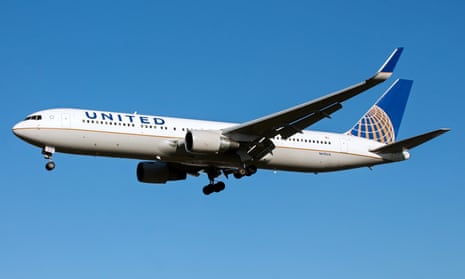United Airlines Flight 880 was carrying more than 200 passengers from Houston, Texas, to London’s Heathrow airport two weeks ago when it was battered by turbulence that threw people on to the cabin ceiling. Twenty-three people were injured. “We were flying along as smooth as can be and then were just slapped massively from the top as if someone had torpedoed us,” one passenger told journalists.
The aircraft, a Boeing 767-300, made an emergency landing at Shannon airport and the injured were taken to University Hospital, Limerick. No one was seriously hurt but all went through a terrifying experience and one, say experts, which will increasingly affect flights.
“It is predicted there will be more and more incidents of severe clear-air turbulence, which typically comes out of the blue with no warning, occurring in the near future as climate change takes its effect in the stratosphere,” Dr Paul Williams, a Royal Society research fellow at Reading University, said last week. “There has already been a steady rise in incidents of severe turbulence affecting flights over the past few decades. Globally, turbulence causes dozens of fatalities a year on small private planes and hundreds of injuries to passengers in big jets. And as carbon dioxide levels in the atmosphere keep on rising, so will the numbers of incidents.”
Williams said that at heights of around 10 to 12km (6-7 miles), a typical cruising altitude for a modern passenger jet plane, temperature changes caused by increased amounts of carbon dioxide in the atmosphere have the effect of making different layers of airflow move at increased speeds relative to each other. When this unstable airflow produces clear-air turbulence – and there are no visual clues to give a pilot warning of what lies ahead – then the aircraft is thrown about with considerable force. “If the effect is severe, it will overcome the force of gravity and fling people out of their seats. Turbulence of this severity is being encountered by planes thousands of times a year now,” Williams added.
In the United States alone, it is estimated that the damage, delays and disruption from turbulence already cost more than $500m (£374m) a year. And all studies suggest that incidents are getting more frequent. For example, in 2006, the US Federal Aviation Administration reported that the number of incidents in which turbulence caused serious accidents in US flights more than doubled between 1982 and 2003. Crucially, that figure includes adjustments made for the rise in numbers of flights produced by the growth of the aviation industry. “Several other studies have produced the same, consistent pattern of a considerable rise in incidents of turbulence – even after adjusting for the aviation industry’s growth,” added Williams.
As to actions that should be taken, Williams is clear. “Always keep your seat belt fastened. I never used to bother until I started studying incidents of turbulence and the injuries involved. Of course, that won’t protect you from someone else getting thrown in the air and landing on you, but it will substantially minimise your chances of getting hurt.”
As to tackling turbulence, limiting carbon dioxide emissions would be an obvious move, he added, though this remains a problematic political goal. More direct measures would be to improve the science of turbulence prediction and to find better meteorological algorithms for forecasting such incidents. Williams said that at present, the science involved had not reached the required precision for forecasting where and when turbulence might strike, but it was improving all the time.
“Engineers are also working on a technique that involves shining ultraviolet light along the path that a plane is taking,” added Williams. “Then you analyse the reflections that come back to the craft. From that, it has been found you can tell when you are likely to hit a turbulence pocket of air that is going to give the aircraft a severe buffeting.”
The problem is that retrofitting all the passenger aircraft currently in operation with ultraviolet detection systems would – at present – cost more than the expense that turbulence imposes on the air travel industry.
“It is currently too expensive for airlines. However, as more carbon dioxide is pumped into the atmosphere, more turbulence disrupts flights, and more passengers get hurt, then we might see some action,” added Williams. “This problem is not going to go away.”






Comments (…)
Sign in or create your Guardian account to join the discussion